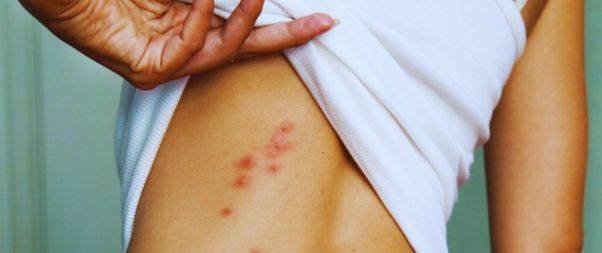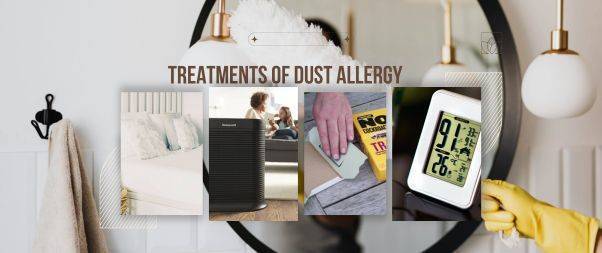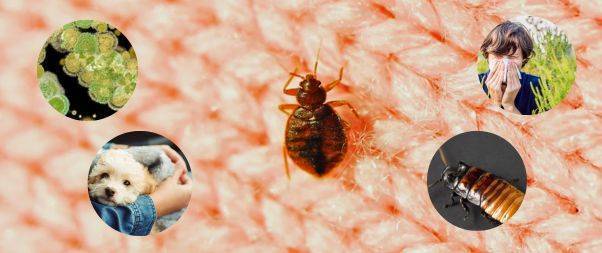Overview
The home is meant to serve as a soothing sanctuary, yet for those with dust allergies, it can evoke distressing symptoms.
Strangely, these symptoms often intensify during or immediately after vacuuming, sweeping, and dusting. As cleaning activities agitate dust particles, they become more easily inhaled.
Individuals with dust mite allergies frequently experience the most discomfort within their own homes or the homes of others.
Dust mites are minuscule creatures, barely visible to the unaided eye. They subsist on household dust and atmospheric moisture. As one of the most prevalent indoor allergens, their symptoms can persist throughout the year.
Dust mite allergies can not only lead to allergic rhinitis but also aggravate asthma and trigger eczema flare-ups.
Symptoms of Dust Allergies

- Sneezing
- Congested or runny nose
- Red, watery, or irritated eyes
- Wheezing, coughing, chest tightness, and difficulty breathing
- Itchiness
These symptoms can vary in severity and duration depending on the individual and the level of exposure to dust allergens.
If you have asthma and a dust mite allergy, you might encounter additional symptoms, such as:
- Chest pain or tightness
- Trouble breathing
- Difficulty speaking
- Severe asthma attacks
These symptoms can vary in intensity and should be closely monitored, as they may require medical attention.
Causes of Dust Allergies

An allergy occurs when the immune system reacts to a foreign substance that is typically not harmful to the body. These substances, known as allergens, can include specific foods, pollens, and dust mites.
Individuals allergic to dust mites have adverse reactions to the remnants of these tiny creatures, which include minuscule piles of feces and decomposing bodies.
Even in a relatively clean home, conditions may still be suitable for dust mites. The average bedroom often provides an ideal environment for them, as bedding, carpets, and furniture cushions trap and retain moisture, allowing these tiny bugs to thrive. As you continue to inhale dust mite waste particles, your allergy symptoms may worsen over time.
It’s worth noting that while dust can cause sneezing and irritation for anyone, only certain individuals exhibit the immune responses that characterize a dust mite allergy.
- Dust mites
- Cockroaches
- Mold spores
- Pollen
- Pet hair, fur, or feathers
Managing and Treating Dust Mite Allergies

Implement changes in your home and daily routine:
- Remove wall-to-wall carpets, curtains, and drapes, especially in the bedroom.
- Keep pets out of the bedroom and, if possible, out of the house.
- Reduce indoor humidity levels.
- Use “mite-proof” covers on mattresses and pillows; frequently wash bed linens in hot water.
- Wear a mask while cleaning.
- Maintain relative humidity in your home below 50%.
Allergy Triggers

Dust mites
Occasionally referred to as bed mites, are the primary cause of house dust allergies. They thrive and reproduce in warm, humid environments, preferring temperatures of 70 degrees Fahrenheit or higher and humidity levels between 75 and 80 percent. When humidity drops below 50 percent, dust mites perish and are typically absent in arid climates.
Dust mite particles commonly reside in pillows, mattresses, carpets, and upholstered furniture. These particles become airborne during vacuuming, walking on carpets, or disturbing bedding, settling back down once the activity ceases.
Dust mites are a frequent cause of childhood asthma.
A house doesn’t have to appear dirty to provoke a dust mite allergy reaction. These particles are too small to be seen and often cannot be removed with standard cleaning methods. In fact, vigorous cleaning can exacerbate an allergic individual’s symptoms.
Cockroaches
Cockroaches can be found in various types of buildings and neighborhoods. Exposure to cockroaches may cause some individuals to develop allergy symptoms. Minute particles from cockroaches are a prevalent component of household dust and could be the actual cause of a dust allergy.
Mold
Mold is a fungus that produces airborne spores. When inhaled by individuals with mold allergies, these spores trigger allergy symptoms. There is a wide variety of mold types—some visible, others not.
Molds can be found everywhere—on logs, fallen leaves, and in damp areas such as bathrooms and kitchens. Mold particles and spores are common components of household dust and could be the actual cause of a dust allergy.
Pollen
Pollen originates from trees, grasses, flowers, and weeds. Individuals may be allergic to specific types of pollen. For example, some may be allergic only to beech tree pollen, while others may be allergic to pollen from certain grasses. Pollen is a frequent component of household dust and may be the true cause of a dust allergy.
Animal hair, fur, and feathers
Pets can trigger allergic reactions in various ways. Their dander (skin flakes), saliva, and urine can cause an allergic response, particularly when combined with household dust. In homes with birds, feathers and bird droppings can become embedded in household dust, leading to issues for those allergic to these substances.
Treatment

If you suspect an allergy to any components of house dust, consult an allergist. To identify the cause of your symptoms, the allergist will ask detailed questions about your work and home environments, family medical history, the frequency and severity of symptoms, and exposure to pets and other potential triggers.
Occasionally, the medical interview can reveal a probable cause—for example, a girl who experiences a stuffy nose every time she plays with her friend’s cat might be allergic to cats or the dust infused with cat hair in the friend’s house.
Often, an allergist needs to perform a skin test to accurately determine the source of an allergic reaction.
Skin tests involve pricking the skin with a small, sterile probe containing extracts from common allergens, such as tree pollen and pet dander, and monitoring the reaction. A positive reaction (a raised bump surrounded by redness) may indicate an allergy to that substance. In some cases, your allergist may order both a blood test and a skin test to confirm an allergy.
Managing Dust Allergies
To manage a dust allergy effectively, it is crucial to minimize exposure to allergens.
Here are some straightforward steps to decrease indoor dust exposure:
- Choose wood flooring over wall-to-wall carpets when possible, particularly in bedrooms.
- Regularly clean your home using a central vacuum or a vacuum with a HEPA filter. If you have allergies, wear an N95 filter mask while dusting, sweeping, or vacuuming. (Allow over two hours for dust to settle after thorough cleaning—ideally, clean when the allergic individual is not present and avoid cleaning their bedroom at night.)
- Use “mite-proof” covers on mattresses and pillows. Frequently wash all bed linens in hot water.
- Operate a HEPA air cleaner in the allergic person’s bedroom.
- Keep pets out of the allergic person’s bedroom at all times.
- Cover all unrefrigerated food and dispose of food waste in a tightly sealed garbage can.
- If cockroaches are an issue, employ roach traps and schedule routine visits from a professional pest control service.
- Install a high-efficiency media filter with a MERV rating of 11 or 12 in your furnace and air conditioning unit. Keep the fan on to establish a “whole house” air filter that removes particulates. Change the filter at least every three months (or with the change of seasons) to maintain clean air year-round. Inspect and service your heating and air conditioning units every six months.
- Regularly use a hygrometer to monitor your home’s humidity, maintaining levels below 55 percent. In humid or damp climates, consider using a dehumidifier. Utilize vent fans to remove moisture in bathrooms and kitchens. Repair any water leaks to help control moisture levels.
Medications

If reducing indoor dust exposure doesn’t provide sufficient relief, your allergist may recommend a prescription or over-the-counter medication.
Decongestants and antihistamines are the most prevalent allergy medications, helping to alleviate stuffy nose, runny nose, sneezing, and itching. Other medications function by inhibiting the release of chemicals that cause allergic reactions.
Corticosteroid sprays effectively treat nasal inflammation. Allergy shots (immunotherapy) work by gradually increasing an individual’s tolerance to allergy triggers. Oral immunotherapy, which involves dissolving tablets under the tongue, is another option. The first dose is administered under supervision in an allergist’s office, after which it can be taken daily at home. Treatment typically lasts for one year.
Your allergist will collaborate with you to determine the most suitable medications, as well as the appropriate frequency and dosage.
Also Read






